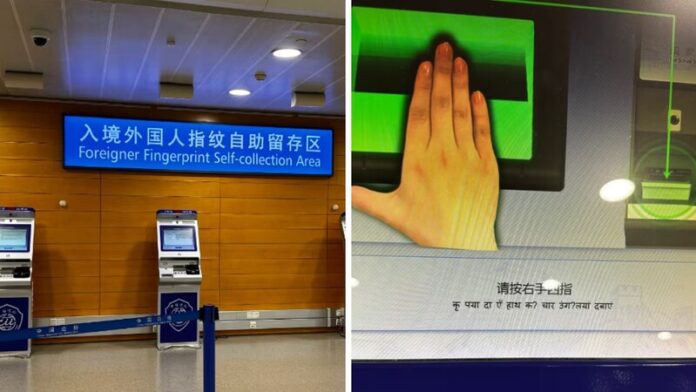An Indian traveller to China, an engineer Shantanu Goel recently shared an amazing experience he had while visiting China. Goel used social media platform X to discuss his finding that Chinese machines can recognize an Indian passport and speak Hindi, according to the language preferences of foreign visitors.
Pictures of the machines at the Foreigner Fingerprint Self-Collection Area and the instructions in Mandarin and Hindi were posted with his post. “Landed in #China These machines speak in Hindi on detecting my Indian passport,” was the caption Goel posted.
The post went viral fast, piqueing people’s interest on social media. In response to a user’s question regarding the available languages, Goel said, “Was using the language of the country (eg spanish, german, french etc).” Hindi was used by default for India. I wasn’t sure if other languages were an option, and the interface didn’t seem to have a choice.
The widely shared image spurred additional conversations about how friendly China is to visitors and business travelers.
Remarkably, a different user disclosed that China has been using this feature for language adaptation for a minimum of four years. As early as 2019, the Shanghai airport had this technology installed, integrated into the apparatus used to collect fingerprints at immigration points.
Additional user insights revealed that these multilingual machines are not just found in airports but are found all over China, including at road entry points. Users emphasized the widespread and inclusive nature of this technology by sharing stories of coming across similar machines while traveling from Nepal into China.



